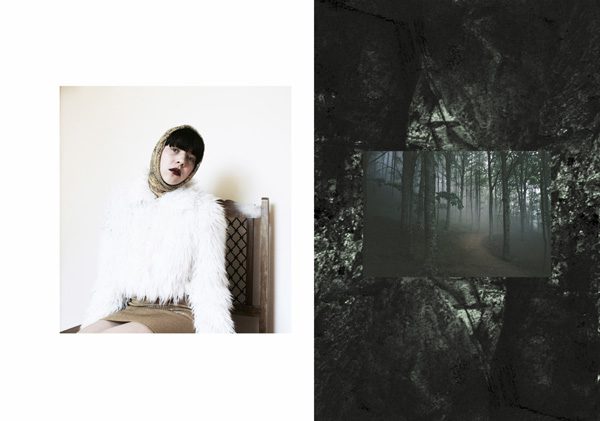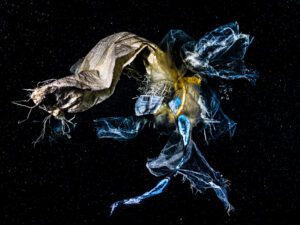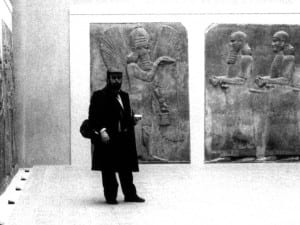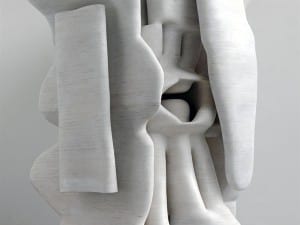The Aesthetica Art Prize is a celebration of excellence in art from across the world and offers artists the opportunity to showcase their work to wider audiences and further their involvement in the international art world. Previous finalists include Julia Vogl, who was shortlisted for New Sensations – Saatchi Gallery and Channel 4′s Prize – and has exhibited at Zabludowicz Collection; Marcus Jansen, a leading modern expressionist who joined a legacy of artists by featuring in Absolut Vodka’s artistic campaigns, and Bernat Millet, also shortlisted for National Portrait Gallery’s Taylor Wessing Photographic Portrait Prize. The 100 longlisted artists are published in the Aesthetica Art Prize Annual and the shortlisted artists will appear in an exhibition at York St Mary’s from 8 March until 28 April. We spend some time with long-listed artist Vasilisa Forbes. Vasilisa’s work focuses on humanity’s relationship with surrounding environments and technology. Her winning work comes from The Hours series, which focuses on a narrative created by the trauma of a recent event.
A: How does it feel to be part of the Aesthetica Art Prize?
VF: Its great to be involved in something that allows you to see the works of young artists working today alongside your own work, as a way to encourage discovery and communication. It is also an interesting way to discover new works through looking at the previous winners and shortlists of the prize. I’m very glad to have been considered for the first stage (longlist) of the prize, and it has been an encouragement for my working process, as well as giving me an insight into Aesthetica and it’s interesting essays.
A: You work with photography, how do you find this medium is able to express your artistic vision?
VF: Photography allows me greater immediacy in creating an initial image, an image which needs an outlet to bring it to life. I tend to first construct an idea through visualisation via notes and rough drawings, before the image becomes actualised in a clearer sense. I tend to work with photographic images and processes in a way that they become deconstructed and create a new form. At times the processes are invisible and at times they are more evident as an explanation to the symbolism within the image. In the way that Elad Lassry (a photographer and artist whose work I admire) aims for photographs to be seen as “objects” as opposed to purely a final work in itself, I too aim for my works to incorporate the photographic process as a tool for visualisation, but become objects in the sense of combined styles, deconstruction of the image and textured surfaces, a sense of exaggerated dimensions to the commonly flat, 2D, freestanding photographic image.
A: Do you work in any other areas of art?
VF: I tend to work with collage and materials like glass and wood to extend the depth of a photographic image so that it can become an alternative form in its own right. I am always drawn to artists books and experimental photographic works i.e. the camera-less photography of Raphael Hefti, as for me they represent photographic works becoming “objects” and “experiences” in their own right.
I am not interested in photomontage in it’s own sense, but only in where it can create a sensory experience which questions what is organic and what is recreated, what is flat and what has depth and volume. For me artists books are like a sculptural experience, and I am currently working on a new book project in a similar vein. I have also worked with sound, and created ‘sound sculptures’ or sound experiences using both traditional processes like reel to reel players, and modern digital programs. I hope to bring the three elements together of immersive sound, visual and sensory information to work around that idea of dimension and experience.
A: Which photographers have inspired you?
VF: I enjoy works which question contemporary photography and it’s ability to communicate through visual associations, as in the works of Christopher Williams and Roy Etridge, where there is a question between what is fine art and commercialism, which can shift into a category of product “object” photography or fashion consumerism, and “high concept art”. Vivienne Sassen, another great inspiration, in some ways falls into this category, having associations in both fine art, documentary and fashion photography. Sharon Lockharts active photographs are interesting to me, and Masao Yamamoto’s smallscale images which work around that idea of encouraging the photograph to be experienced as a precious “object”.
A: What do you have planned for the future?
VF: I am currently working on a curated artists book, which has come about from my mild obsession with artists books and photo-books. It is a collaborative visual project which will form a “book sculpture” fuelled by my intentions of experimenting with the “book-as-sculpture” ideology and desire to output something collaborative, expressive and involving active thought-processes and dialogue. I am interested in doing something outside of solitary practice, and working on a purposeful project which can fully express the situation of many living in the contemporary age. As I have recently begun to collate greater documentary photographs and journalistic writing, I have found that I am fuelled to tie this into my artistic practice. I am also continuing to work with new photographic series and visual projects exploring human relationships and communication.
A: Do you remember the first photo you ever took?
VF: The first photo I took would have been aged around eight or nine using my fathers camera in the Russian countryside where I grew up, of a tulip. My father did many craft related activities and was interested in encouraging me to experiment and explore my surrounding environment in a similar way. I also remember taking part in a wildlife photography course held in a park in London, when I was nine years old. I was definitely the only nine year old there, with all the other participants being over 50, which they found strange but for me it was very exciting to be able to zoom an old 35mm Minolta into a ladybird.
Aesthetica Art Prize Exhibition, 8 March until 28 April, York St Marys.
Credits
Image courtesy of Aesthetica and Vasilisa Forbes, taken from The Hours series.





